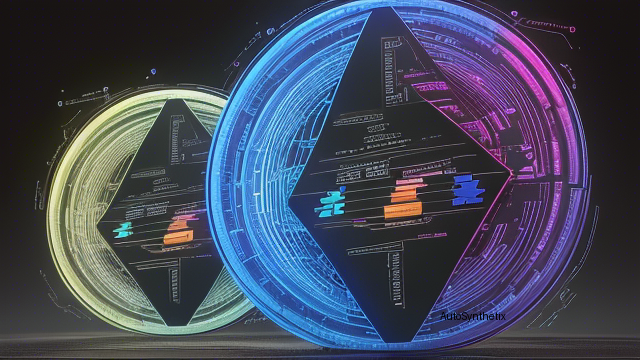Introduction
As technology continues its rapid progression, so do attempts at subverting its foundations through nefarious means. With trillions of dollars invested in cryptocurrencies like those facilitated within the Ethereum ecosystem, securing against malevolent actors becomes paramount. Enter the realm of artificial intelligence (AI); not just confined to creative endeavors but also proving instrumental in safeguarding the integrity of our digital assets. Natan Katz's groundbreaking research dives into the application of machine learning techniques to identify malicious activities lurking amidst seemingly legitimate Ethereum transactions.
Understanding Ethereum's Vulnerability Landscape
At the core of Ethereum lies 'smart contracts', self-executable computer protocols intended to facilitate, verify, or enforce contractual agreements automatically. While revolutionary in their nature, smart contracts open up new avenues for misuse by crafty attackers who might embed purposefully coded flaws, known as "malicious transactions", in these very same contracts. These insidiously designed loopholes allow perpetrators to siphon funds, manipulate balances, or cause disruption across decentralized platforms built upon Ethereum.
Enter Machine Learning in Cyber Defense
Coupled with the challenges posed by an ever-advancing digital landscape, traditional defensive mechanisms struggle under the weight of overwhelming data volumes, time constraints, and expertise requirements. Here arises the need for sophisticated solutions capable of adapting swiftly while leveraging vast datasets - enter machine learning (ML). By analyzing patterns inherent in both normal and malicious behavior, ML models trained on historical data aim to predict future occurrences accurately, thus enabling proactive measures before significant damage ensues.
Katz's Proposed Approach
To combat the menace of covert malfeasance within Ethereum transactions, Katz outlines three distinct yet complementary methodologies employing different facets of deep learning architectures. First, he utilizes Generative Pretrained Transformer 2 (GPT-2) in conjunction with opcodes - low-level instructions executed during runtime - to discern potentially malignant operations. Second, solidity - the programming language native to Ethereum's smart contracts - serves as input for a Language Model Optimization Recurrent Allocation (CodeLLama)-enhanced Lora model, further refining the identification process. Lastly, combining features derived from gas consumption alongside hexadecimal signature examinations, eXtreme Gradient Boosting (XGBoost) classifiers offer a comprehensive perspective towards distinguishing between innocuous and illicit transactions.
Conclusion
By harnessing the power of advanced machine learning algorithms, researchers like Natan Katz pave the way toward fortifying the backbone of tomorrow's economies - cryptofinancial systems. As adversaries continue evolving tactics, so too must our defense strategies remain vigilant, adaptive, and forward-thinking. Embracing cutting-edge technologies, including AI, ensures a resolute commitment to maintaining the trustworthiness, interoperability, and transparency promised by the Ethereum ethos.
Source arXiv: http://arxiv.org/abs/2408.08749v1
